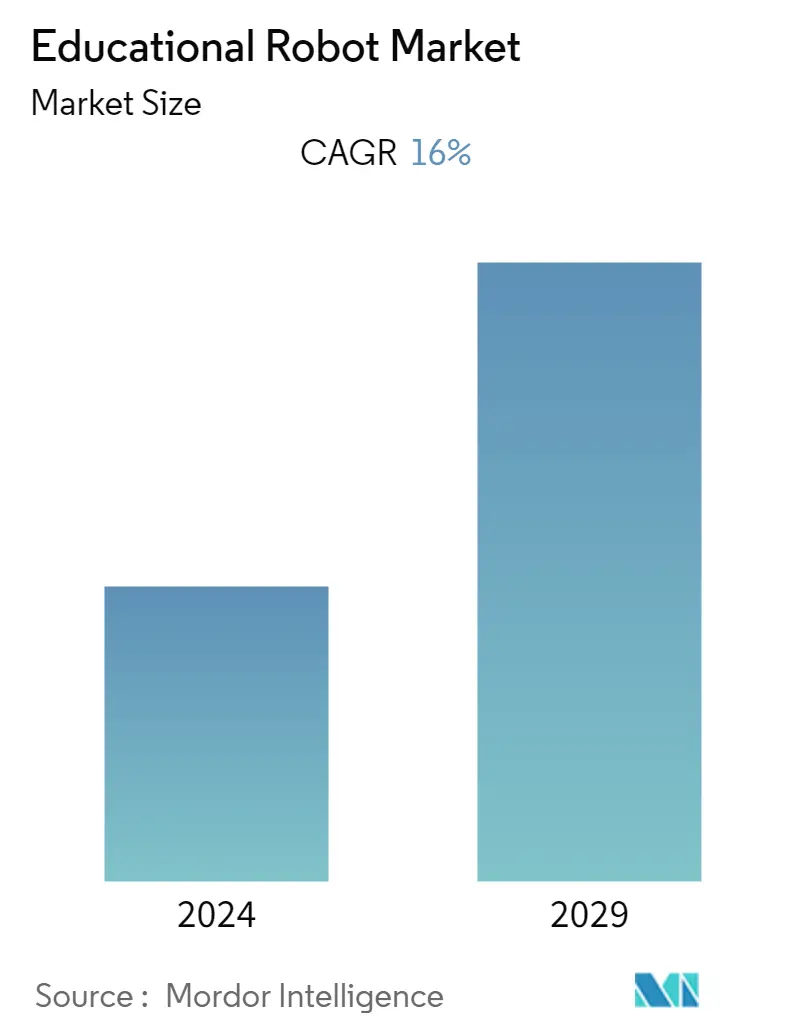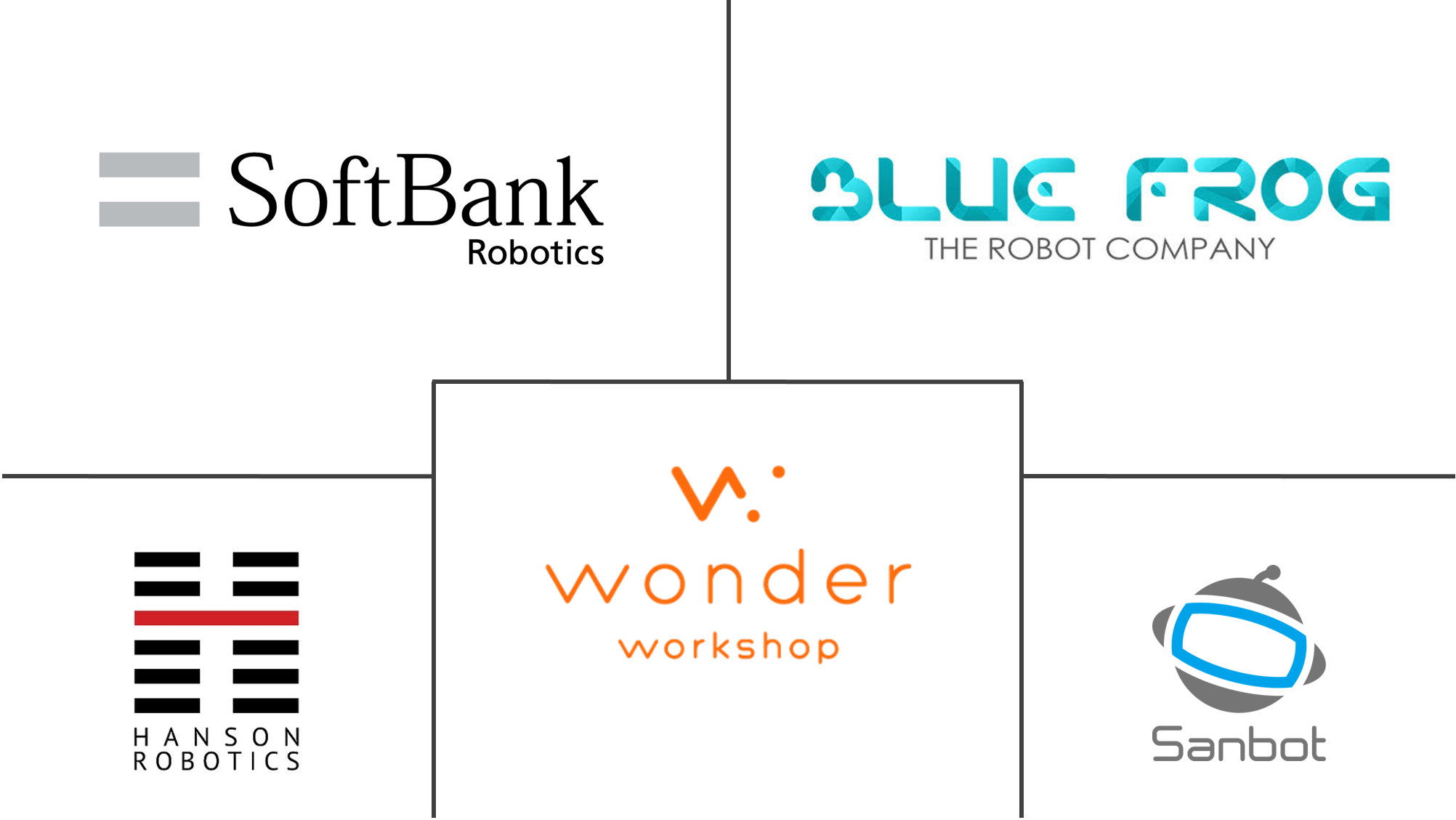Market Size of Educational Robot Industry

| Study Period | 2019 - 2029 |
| Base Year For Estimation | 2023 |
| CAGR | 16.00 % |
| Fastest Growing Market | Asia-Pacific |
| Largest Market | North America |
| Market Concentration | Medium |
Major Players
*Disclaimer: Major Players sorted in no particular order |
Need a report that reflects how COVID-19 has impacted this market and its growth?
Educational Robots Market Analysis
The Educational Robot Market is expected to register a CAGR of 16% over the forecast period. The use of robotics is rapidly becoming more common in educational institutions. Many schools have started testing teaching robots to impart knowledge to their students. These robots can help in delivering lessons in STEM (Science, Technology, Engineering, and Mathematics) concepts that are essential in the educational curriculum.
- Robots can also help children that are homeschooled or teach in areas where human experts are short in supply. For instance, in South Korea, a robot, Robosem, is teaching English where certified English teachers are rare. Similarly, a robot named Keeko narrates stories, possesses logical questions, and interacts with a student using facial expressions in China.
- The use of robotics in learning is ideal for interaction in classrooms as it improves social interaction and encourages collaboration among young children. Playing (and learning) with robots also offer additional benefits for students with disabilities.
- Students with Autism can be very responsive to robots. Robots provide a solution for students with Autism to practice social skills without the pressure of interacting with a real person. Milo (Robokind) is one of the examples of technology being used in schools and clinics for children with an autism spectrum disorder. The robot helps people with Autism in learning social, emotional, and communication skills.
- Moreover, the growing number of individuals with Disabilities Education Act in the United States is also expected to drive the need for educational Robots. According to the Office of Special Education Programs, the number of children aged between 3 to 21 years suffering from Autism accounted for 828 thousand during 2020/2021, compared to 94 thousand in 2000/2001.
- Moreover, robots are increasingly being adopted as teaching assistants or advanced learning tools. One of the teachers at Wellington College (United Kingdom) has predicted that artificially intelligent robots will likely replace educational teachers in the next few years.
- However, high initial investments and maintenance are expected to be one of the major restraints as the robots require a timely update on educational content and require good battery life for conducting classes for hours without recharging.
- While the COVID-19 pandemic increased demand to entertain and educate children, and vendors have been focusing on product launches, Roybi Inc. relaunched its robot Roybi along with the DOCBI model amid current challenges. However, post the pandemic, the requirement for homeschooling and online training increased, which is expected to offset the market growth slightly.
